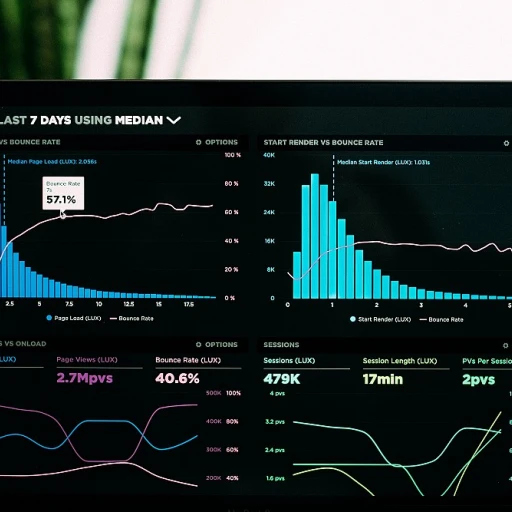
Understanding the Role of Interface Design in Social Media
The Intersection of Design and User Experience
Interface design has emerged as a pivotal aspect of the user experience on social media platforms, including Facebook. This is not just about aesthetics; it's about how design choices impact usability and engagement. These elements are crucial for ensuring that users have a seamless and intuitive interaction with their social networks. A well-crafted interface can drastically influence how users interact with the platform's features and content, directly affecting the network's financials.
Facebook's evolution over the years is illustrative of the power of interface design in shaping user behavior and network effects. Every update to its design, be it in the news feed or user profiles, reflects a strategic approach to maximizing user engagement and retention. This engagement, in turn, influences revenue via increased user activity and interactions with content, driving up the value for advertisers.
Given the complex business landscape, platforms like Facebook invest heavily in designing interfaces that not only captivate but also retain users. Financial success is frequently tied to how well these media platforms can leverage design to create a compelling user journey, which encourages longer and more frequent site visits. In this context, interface design becomes a vital tool in the arsenal of social media companies seeking to boost their network financials.
As we explore this interconnected world, we aim to understand how influencers and businesses can adopt effective strategies to navigate this environment. For those interested in deeper insights on this topic, exploring the algorithms that drive platform engagement can provide additional context and strategies.
The Impact of Facebook's Interface on Network Financials
Facebook's Interface: A Game Changer in Financial Dynamics
In the dynamic world of social media, Facebook has emerged as a transformative force, shaping the financial landscape of social networks through its interface design. With over a billion users across the platform, Facebook's media website is not just about connecting people, it's a sophisticated design net that drives business success and boosts network financials.
The features of Facebook's interface play a pivotal role in influencing how companies can generate revenue. From the strategic placement of ads in the news feed to the integration of monetizable content, the interface serves as the backbone for various revenue streams. The network effects created by these features foster a robust environment for platform growth and network sustainability.
Moreover, Facebook's innovative media platform continues to refine its financials interface to cater to a diverse range of social networking needs. This adaptability is key in maintaining its status as a leading platform in the social realm and a crucial element in shaping network website revenue potential.
For those interested in exploring advanced methods to keep up with these rapid changes and remain influential on Facebook, you can dive into more detailed strategies in a comprehensive article on cultivating resonance.
Challenges in Designing for Financial Success on Social Media
Overcoming Obstacles in Crafting Financially Viable Interfaces
Designing interfaces that contribute to financial success on social networks like Facebook presents unique challenges. These obstacles are tied to various factors, including user behavior, platform capabilities, and the complex interplay between social media networks and financial outcomes. One significant challenge is ensuring that the interface effectively drives engagement without compromising user experience. Media platforms such as Facebook rely heavily on their user interface to retain and attract users, but there's a delicate balance to strike between monetization and seamless user interaction. A cluttered or overly complex interface can deter users, affecting overall engagement and, consequently, network financials. Another hurdle involves the consistent evolution of user expectations. As people's preferences evolve, so must the features and functionalities of social networking sites. This constant shift requires platforms to adapt quickly to maintain user interest and secure business viability. The introduction of new features must be carefully planned to enhance user experience while opening up new revenue streams. Data privacy is another pressing issue that must be addressed when designing interfaces. Users are increasingly aware of how their data is used, making transparency and trust crucial to any company's long-term success on social networks. Integrating secure and transparent design elements not only reassures users but also aligns with evolving regulatory landscapes. Moreover, the presence of robust competitors places pressure on Facebook to continuously innovate its interface design. As new social media platforms and networks emerge, users have more choices than ever, and retaining them becomes a constant challenge. Tackling these challenges requires a deep understanding of the financial landscape and the ability to create social designs that are inclusive, intuitive, and revenue-generating. For influencers and businesses seeking to leverage Facebook for financial growth, exploring strategies that harness Facebook’s interface design effectively can unlock significant opportunities. For more insights on building a professional presence in social media, mastering LinkedIn influence can also offer valuable guidance.Strategies for Influencers to Leverage Interface Design
Optimizing Visibility and Engagement Through Thoughtful Design
The financial success of social networks heavily leans on how effectively they engage users. A crafting interface design on Facebook plays a pivotal role in maximizing both visibility and engagement for influencers and businesses alike. As seen in previous sections, the design of a social media platform influences how content is discovered and consumed, ultimately impacting revenue streams. To make the most of Facebook’s design for reaching billions of users, influencers should prioritize a blend of creative content and strategic planning. Here's how:- Highlighting Key Features: Take full advantage of Facebook's features like live video, stories, and dynamic photo layouts. By carefully selecting and utilizing these features, influencers can increase user interaction and content reach across the network.
- Understanding News Feed Rankings: Facebook’s algorithms prioritize content that meets specific criteria, such as high engagement levels. Influencers should tailor their posts to prompt likes, comments, and shares to ascend in the news feed hierarchy.
- Data-Driven Decision Making: Regularly analyzing performance data provided by Facebook Insights can inform business and content strategies. By understanding what resonates with their audience, influencers can refine their approach to optimize visibility and financial outcomes.
Case Studies: Successful Interface Designs on Facebook
Real-Life Success Stories of Facebook Interface Design
The successful implementation of interface design on social media platforms often stems from understanding user needs and integrating innovative features that enhance user engagement. Here, we'll explore several real-world examples where Facebook's design choices significantly influenced network financials and user interactions. Adaptation and Innovation in News Feed Facebook's news feed has been a crucial feature in capturing user interest. By continuously adapting its content algorithm and design layout, Facebook has maintained relevance and maximized user retention. This dynamic approach has played a vital role in creating substantial revenue streams for the company, pushing beyond the billion-dollar mark in terms of ad earnings. User Engagement Through Interactive Media The introduction of live features and interactive content formats such as Stories allowed Facebook to bolster user engagement significantly. These interface updates not only enhance the user experience but also provide avenues for businesses to connect with potential customers, ultimately leading to improved financial landscapes for advertisers on the platform. Integration of Business Tools Facebook has cleverly integrated a suite of business tools within its interface. For instance, the Marketplace and various ad management features provide businesses with seamless ways to engage with Facebook users. This functionality not only increases the platform's utility for business networking but also contributes to the overall financial success and valuation of the social networking giant. Case Studies Reflection: Building Network Effects The strategic aspects of Facebook’s interface design often focus on harnessing network effects. By ensuring that each addition of features like Groups or enhanced messaging services adds value not just to the platform but also to the users and businesses alike, Facebook exemplifies how intelligent design can drive financial success across social networks. By continually refining its interface, Facebook demonstrates the importance of aligning user-centric design with broader business objectives, thus fostering an ecosystem that is both engaging and financially rewarding.Future Trends in Interface Design and Network Financials
Anticipating Changes in Interface Dynamics and the Financial Landscape
The future of interface design on social media platforms is expected to evolve with the advances in technology and shifting user preferences. This evolution is crucial not only for enhancing user experience but also for the financial growth of social networks like Facebook. Key trends anticipated in interface design include:- Personalization Enhancements: Media platform interfaces will increasingly focus on customization. Personalized content streams and user-specific features will become more prominent, encouraging deeper engagement and consequently, greater revenue opportunities through targeted ads and premium services.
- Seamless Integration of Augmented Reality (AR): As AR technology advances, social networks are likely to integrate AR features within their interfaces. This innovation promises to enhance user interaction, providing companies with new avenues for user engagement and monetization.
- Emphasis on Community and Interactivity: Building social connections will continue to be a priority. Enhanced interactivity features—such as live video interfaces and collaborative tools—will shape the way users engage on platforms, potentially boosting network effects that improve network financials.
- Data-Driven Design Adjustments: Data analytics will continue to influence interface design decisions. Businesses will leverage user data to craft interfaces that maximize user retention and, by extension, stabilize revenue streams.













